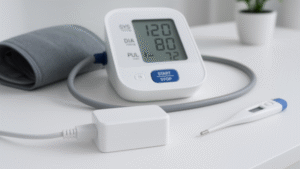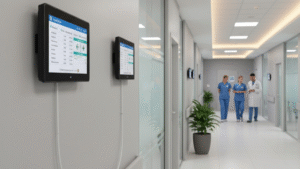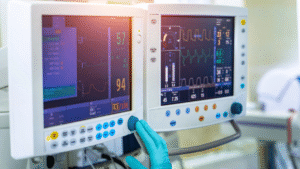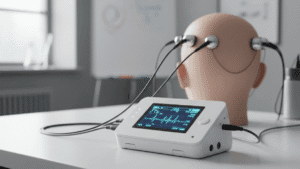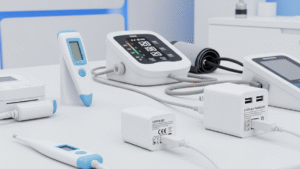Introduction
Walk into a modern lab, and you’ll notice all sorts of machines quietly humming along. And right there, almost everywhere, is the laboratory balance. Scientists use it to weigh teeny-tiny samples, pharmaceutical labs measure exact ingredients with it, and testing facilities rely on it to check standard samples. Looks simple, right? Just a little platform with a display.
But here’s the thing—behind that neat exterior, an unsung hero is doing a lot of heavy lifting: the power supply adapter.
Honestly, most people don’t give it a second thought. But a small voltage hiccup, some electrical noise, and suddenly your reading jumps, or worse, your experiment might be off. That’s why more and more balance manufacturers are going with external power supplies. It’s not just for looks—it actually helps with safety, heat management, and keeping the thing running smoothly for years.
Why Balances Are So Sensitive
A lab balance is no kitchen scale. I mean, a home scale might be okay down to a gram, sure. But balances in labs? We’re talking milligrams, micrograms, sometimes even smaller. Imagine making a pharmaceutical formula—some components are such a tiny fraction of the total mix that if your measurement is even slightly off, the whole batch could be a disaster.
And that’s why balances are picky about their environment. Air drafts, temperature swings, and even someone walking by too close can affect readings. High-end balances usually have shields and need controlled labs just to stay accurate.
But the thing that surprises most people is the power supply. Yep, that little box can make or break your readings. A tiny fluctuation in voltage can make sensors “jump” and give weird numbers. And once you realize that, you start to see that a balance isn’t just its platform and sensors—everything behind the scenes matters, including the power supply.
What the Power Supply Actually Does
Now, people often think, “Power supply? Just plugs in, does its job, right?” Not really. In a lab balance, the power supply is way more important than just giving it juice.
These balances often use electromagnetic compensation or strain gauges. They’re super sensitive. If the power has ripple or noise, the readings can go all over the place. And over time, bad power can even damage components, shortening the life of the balance.
Plus, it acts like a shield. Labs have tons of devices running at once, and that can introduce interference. If the power supply doesn’t filter or isolate, your balance can get random spikes. Then scientists are stuck wondering: “Is this a sample issue, or is the machine acting up?” Most times, it’s the power supply sneaking around causing trouble.
So yeah, the power supply? It’s the invisible foundation keeping your balance stable.
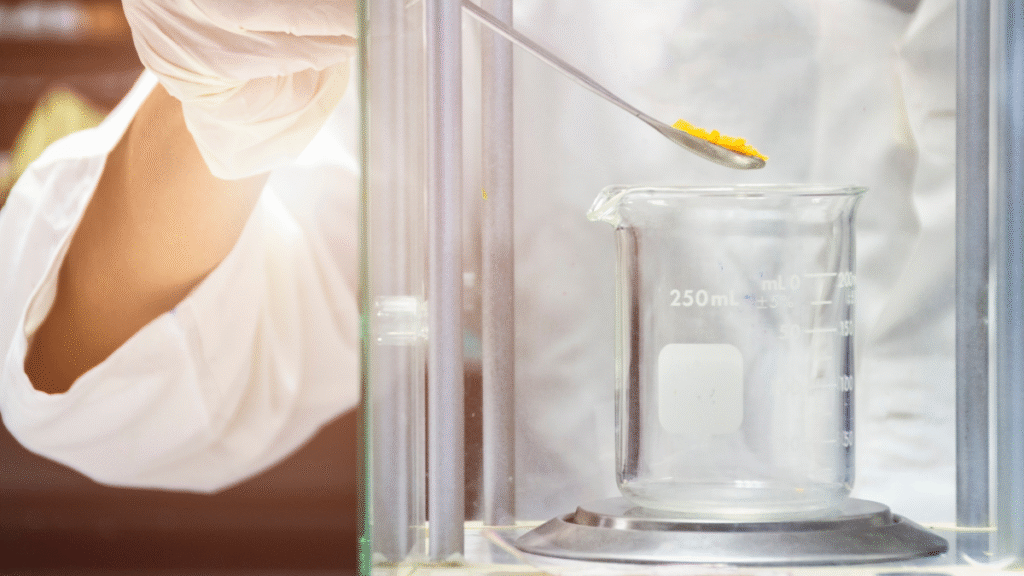
Why Internal Power Supplies Are Tricky
Putting the power supply inside the machine looks neat. Everything’s compact, and the user just plugs it in. For a printer or a speaker, fine. But for a balance? It’s not that simple.
Heat is a big one.
Power modules generate heat. Sensors are sensitive. Even a few degrees can make readings drift. Internal placement puts heat right next to the sensitive parts. Not great.
Maintenance is annoying.
Power goes bad? With internal units, you might have to send the whole machine back for repair. Weeks of downtime. Labs don’t have that kind of time. Experiments get delayed, production slows.
Certifications are tougher.
Exported lab equipment often needs CE, UL, or other approvals. Internal power? The whole machine has to pass both device and power standards. More time, more cost.
Bottom line: internal power looks nice, but in high-precision labs, it causes more headaches than it solves.
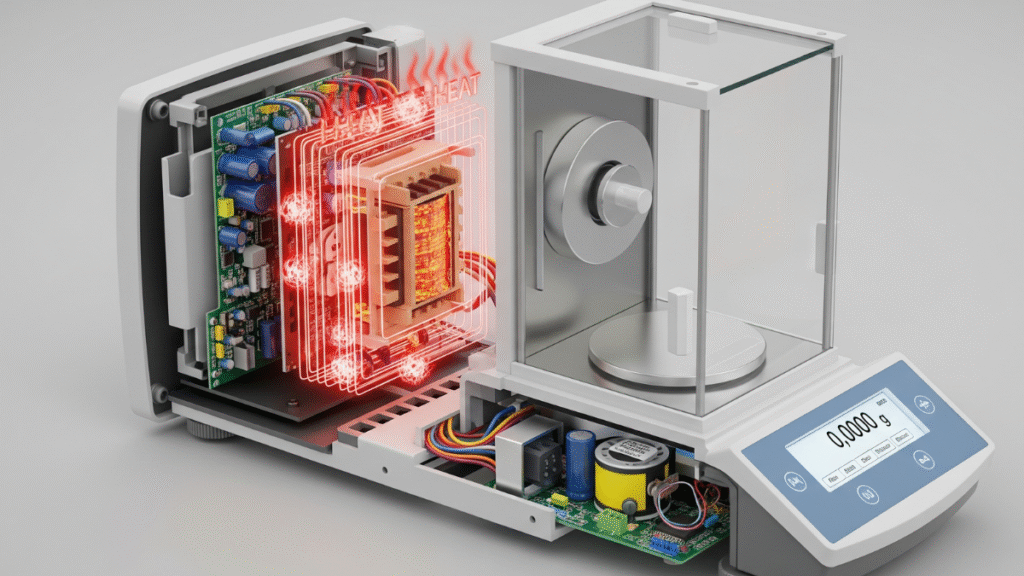
Safety—External Power’s First Big Win
Safety is huge in labs. And I’m not just talking about not shocking yourself—this is about keeping data reliable and experiments safe.
Easier certification.
Using external power? Manufacturers can pick adapters that are already certified. Makes compliance way easier and speeds things up.
Better isolation.
Power is the part most likely to fail. Internal failure = possible damage to the balance. External? That adapter blows up? No problem—the balance is safe.
Quick fixes.
Spot a problem in the lab? Swap the adapter. Done. No shipping back, no waiting weeks. Everyone sleeps better at night knowing it’s simple.
Honestly, it’s not just “safer” in a vague sense—it’s safer, faster, and way more convenient.
Heat and Stability
Balances hate temperature swings. Even tiny changes can skew microgram readings. Internal power supply = a little heater sitting next to your sensors. Not ideal.
External power moves the heat away. The inside of the balance stays cooler and stable. Sensors are happy, numbers stay consistent.
Also, it reduces electrical noise. Switch-mode power inside? It could interfere with sensitive measurements. External power? Keeps things isolated. It’s amazing how such a small change makes such a big difference in reliability.
Maintenance and User Experience
Power supplies wear out. It’s normal. Internal units? The whole machine goes back for repair. Painful. External? Swap the adapter, and you’re back in business. Quick, simple, no fuss.
For manufacturers, it’s a relief too. They can send out adapters instead of taking back a whole device. Cheaper, faster, fewer headaches. International shipping? Even better, since you’re not sending large machines across borders.
For lab users? Less downtime, fewer frustrations, more experiments getting done. Trust me, once you experience this, it’s hard to go back to internal power designs.
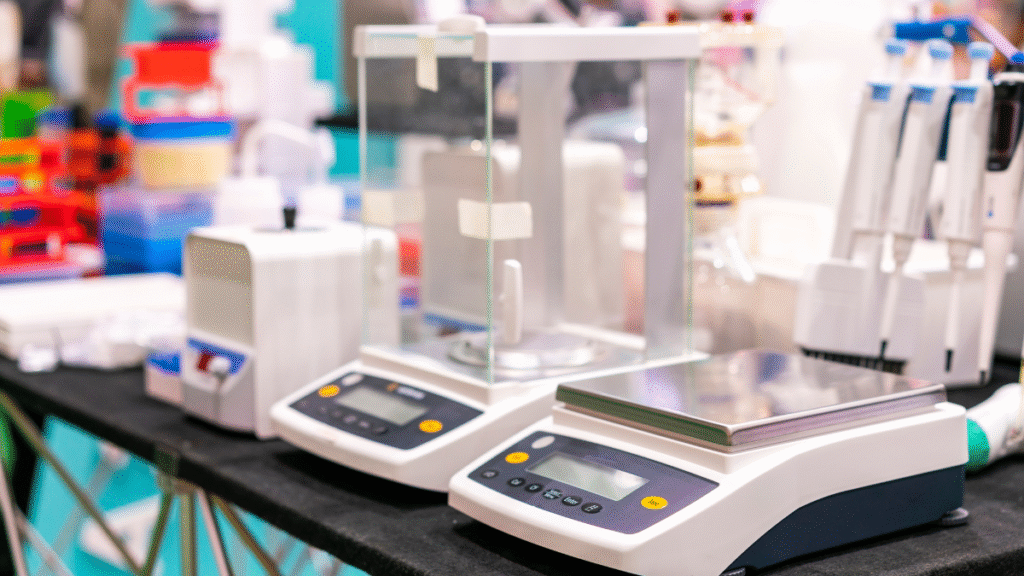
Industry Trends
External power isn’t just for balances anymore. Centrifuges, spectrometers, testing devices—all are going external. Why?
Modular design
Devices are getting lighter and modular. External power fits perfectly.
Global compatibility
Different regions, different voltages, different certifications. External makes it simple.
Sustainability
Swap, upgrade, extend device life, reduce e-waste. Win-win.
This trend is catching on fast. For balances, it’s becoming a standard—not optional.
Conclusion
That little adapter sitting beside a lab balance? It’s more than just a plug. It affects safety, heat, maintenance, and reliability. It’s the reason your balance can stay precise for years.
From safety to thermal stability to convenience, external power is a game-changer. And honestly, if you’re working with microgram measurements, it’s almost mandatory.
Next time you see a sleek lab balance, glance at that tiny adapter. That little box is quietly making sure your numbers are accurate, your experiments run smoothly, and science stays reliable.


